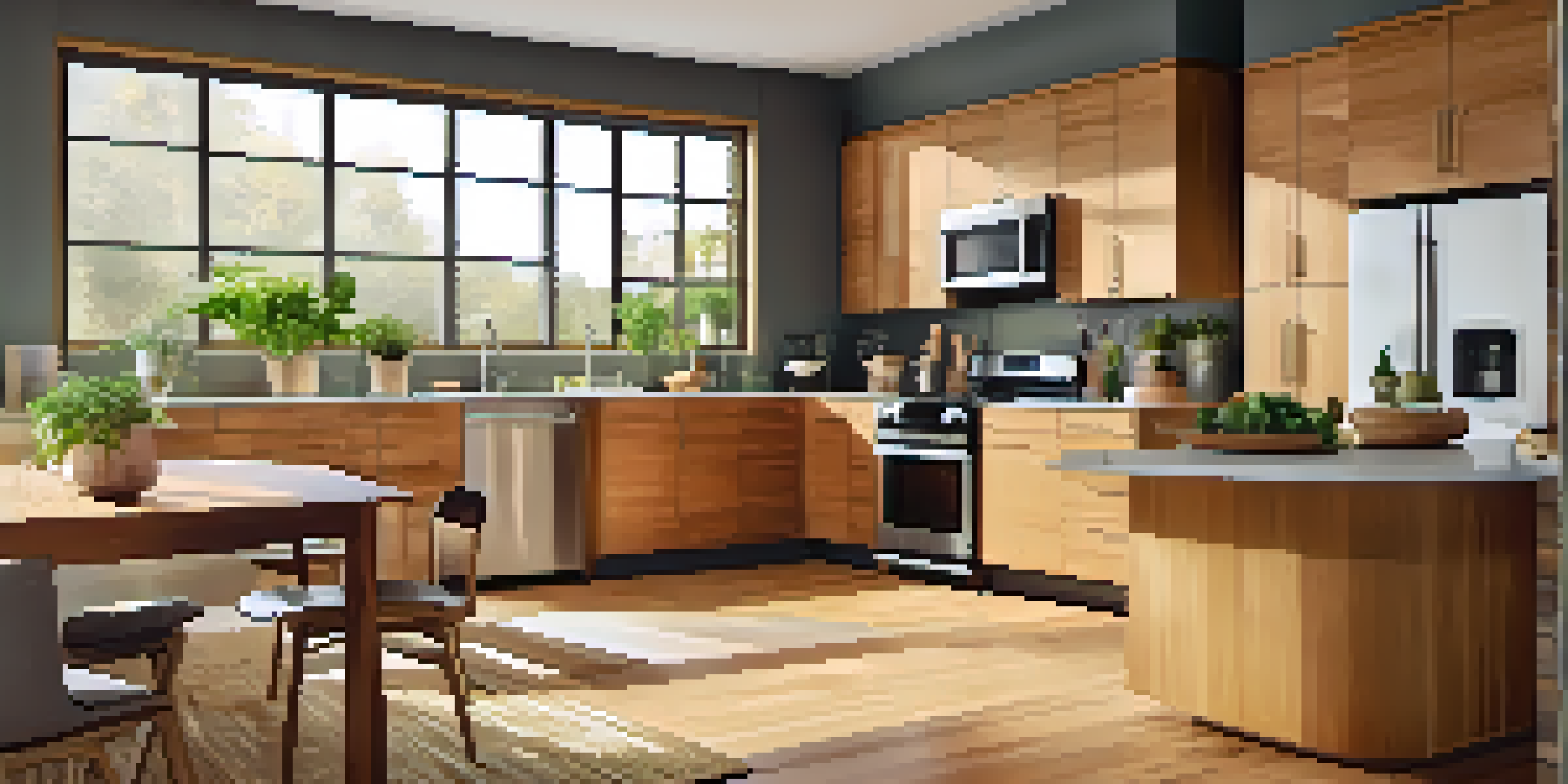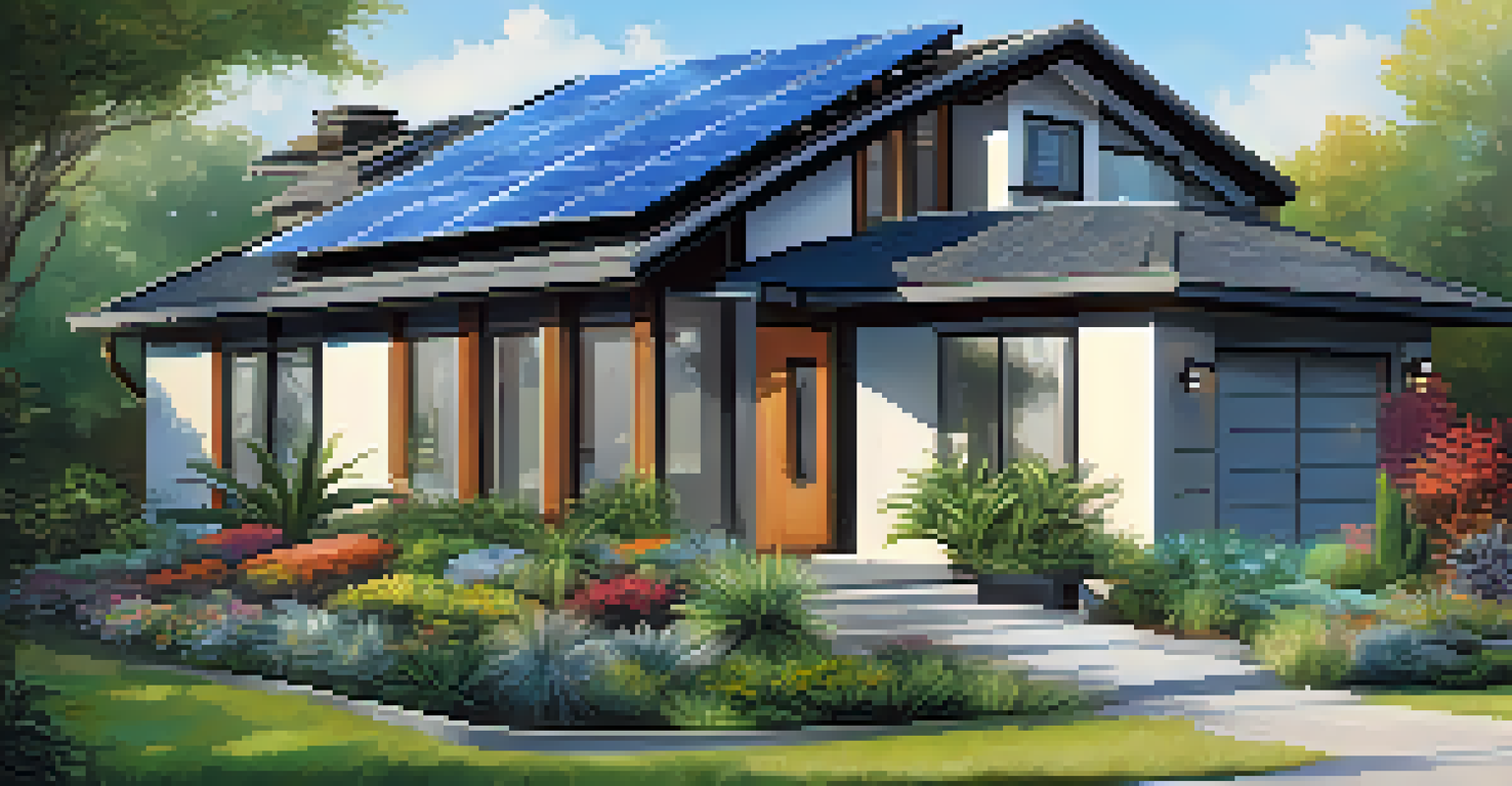How to Make Energy-Efficient Choices While Remodeling

Understanding Energy Efficiency in Remodeling Projects
Energy efficiency means using less energy to perform the same tasks, which can significantly reduce your utility bills. When remodeling, it’s crucial to consider how your choices impact energy consumption, both during and after the project. This approach not only benefits your wallet but also contributes to a healthier planet.
Energy efficiency is doing more with less.
For instance, opting for energy-efficient appliances can lead to substantial savings over time. Instead of standard models, look for those with the ENERGY STAR label, which indicates they meet strict efficiency guidelines. These small changes can create a ripple effect, making your entire home more sustainable.
Moreover, remodeling is a perfect opportunity to upgrade your insulation and windows. Improving these elements can keep your home comfortable year-round, minimizing the need for heating and cooling, thus conserving energy.
Choosing Sustainable Materials for Your Remodel
When selecting materials for your remodeling project, consider sustainability. Materials like bamboo, reclaimed wood, and recycled metal not only have lower environmental impacts but also add unique character to your home. By prioritizing sustainable options, you can create a space that reflects your values.

For example, bamboo is a fast-growing resource that can be harvested without harming the environment, making it a fantastic flooring choice. Similarly, reclaimed wood brings a rustic charm while reducing waste by repurposing materials. These choices not only enhance aesthetics but also promote eco-friendliness.
Energy Efficiency Saves Money
Choosing energy-efficient appliances and systems can significantly reduce utility bills while promoting a healthier planet.
Additionally, look for low-VOC (volatile organic compounds) paints and finishes, which improve indoor air quality. By being mindful of the materials you choose, you can create a healthier living space while also reducing your ecological footprint.
Incorporating Energy-Efficient Windows and Doors
Windows and doors play a significant role in your home’s energy efficiency. Poorly insulated windows can lead to significant heat loss in winter and heat gain in summer, driving up your energy bills. Upgrading to double or triple-pane windows can make a world of difference.
The greatest threat to our planet is the belief that someone else will save it.
Consider also the orientation of your windows to maximize natural light and warmth. Strategically placed windows can reduce the need for artificial lighting and heating, creating a more comfortable living space. Plus, don’t forget about energy-efficient doors that prevent drafts and maintain your home’s temperature.
Installing window treatments like shades or blinds can further enhance efficiency by blocking out heat during summer months. By focusing on these elements, you’ll not only improve your home’s comfort but also its energy performance.
Utilizing Energy-Efficient HVAC Systems
Heating, ventilation, and air conditioning (HVAC) systems are often the largest energy consumers in a home. When remodeling, consider upgrading to an energy-efficient HVAC system that uses less energy while providing superior comfort. Look for models with high SEER (Seasonal Energy Efficiency Ratio) ratings, which indicate better energy performance.
In addition to upgrading your system, regular maintenance is key to ensuring it runs efficiently. This includes changing filters, sealing ducts, and scheduling professional check-ups. A well-maintained system not only saves energy but also prolongs the life of your equipment.
Sustainable Materials Matter
Opting for sustainable materials like bamboo and reclaimed wood not only benefits the environment but also enhances your home's character.
Incorporating smart thermostats can also enhance efficiency, allowing you to control your home’s temperature remotely. By investing in these technologies, you can optimize your home’s energy use while enjoying a cozy atmosphere.
Considering Renewable Energy Sources
Incorporating renewable energy sources into your remodeling project can significantly reduce your reliance on fossil fuels. Solar panels, for instance, harness the sun’s energy to power your home, potentially eliminating your electricity bill. While the upfront cost can be daunting, the long-term savings and environmental benefits make it a worthwhile investment.
Another option is installing a solar water heater, which can provide hot water more efficiently than traditional methods. This can drastically cut down on energy consumption, especially in households with high hot water usage. And don’t forget about wind energy if you live in a suitable area; small wind turbines can be an effective way to generate power.
By embracing renewable energy, you’re not just making your home more energy-efficient; you’re also contributing to a sustainable future. It’s a win-win for both your wallet and the planet.
Implementing Smart Home Technology
Smart home technology is revolutionizing how we manage energy consumption in our homes. Devices like smart thermostats, lighting, and appliances allow you to optimize energy use based on your lifestyle. For example, smart thermostats learn your schedule and adjust temperatures accordingly, ensuring energy isn’t wasted when you're not home.
Additionally, smart lighting systems can be programmed to turn off when a room is unoccupied or adjust based on the time of day. This helps minimize unnecessary electricity use while still providing convenience and comfort. Even smart power strips can help manage energy consumption by cutting off power to devices that aren’t in use.
Smart Tech Enhances Efficiency
Integrating smart home technology allows for better energy management, adapting to your lifestyle and reducing unnecessary consumption.
By integrating smart technology into your remodeled space, you can take control of your energy consumption and make informed decisions that benefit both your home and the environment.
Planning for Long-Term Energy Efficiency
Remodeling is not just about immediate changes; it’s also about envisioning the future. When making design choices, think about how your decisions will impact energy use over time. For instance, open floor plans can enhance natural airflow, reducing the need for heating and cooling.
Consider also the longevity of your materials and systems. Investing in durable, energy-efficient options may have a higher initial cost but will pay off in reduced maintenance and energy bills down the line. It’s all about finding a balance between upfront investment and long-term savings.

Moreover, keep an eye on emerging technologies and trends in energy efficiency. Staying informed will allow you to adapt your home to new developments, ensuring it remains energy-efficient for years to come.